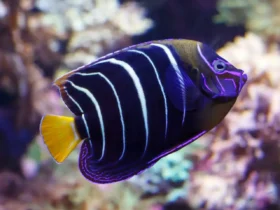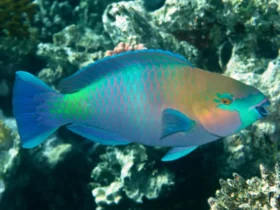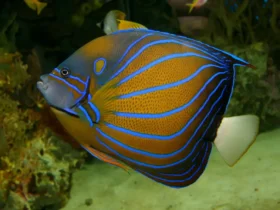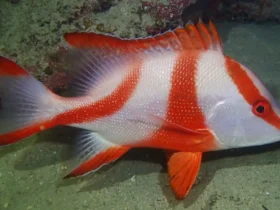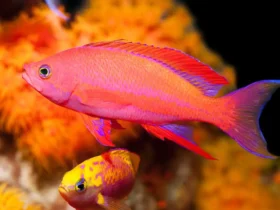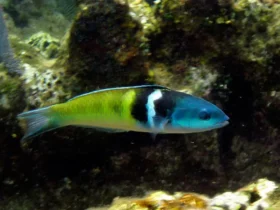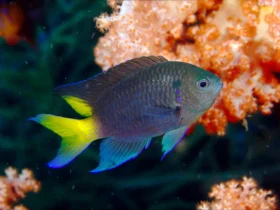Beneath the crystal-clear waters of the tropical coral reefs, a striking and charismatic fish captures the attention of divers and marine enthusiasts: the Harlequin Tuskfish (Choerodon fasciatus). With its vibrant colors, distinctive patterns, and intriguing behavior, this remarkable creature stands out as a true gem of the ocean. In this article, we will dive into the captivating world of the Harlequin Tuskfish, exploring its appearance, habitat, behavior, and the unique characteristics that make it a fascinating species.
Harlequin Tuskfish images
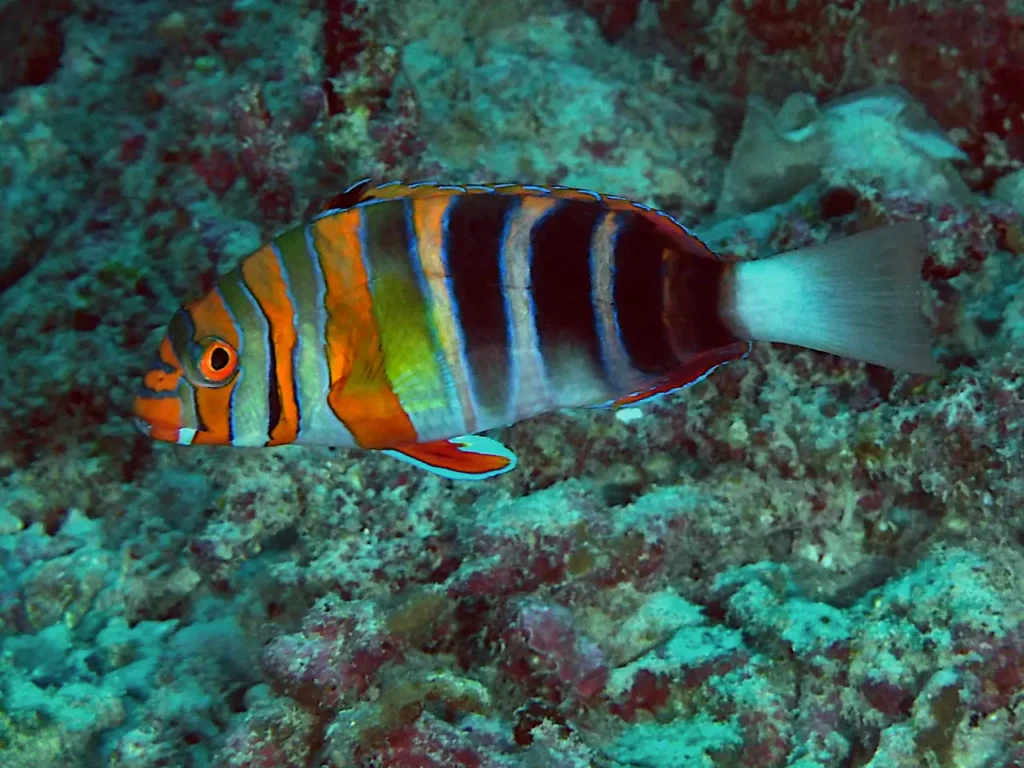
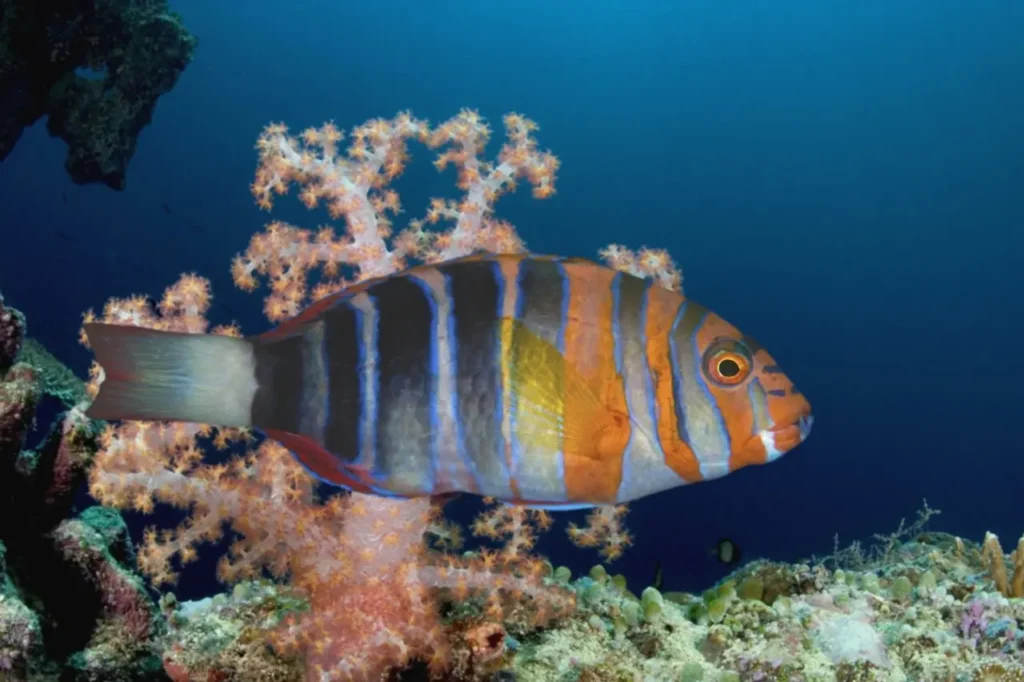
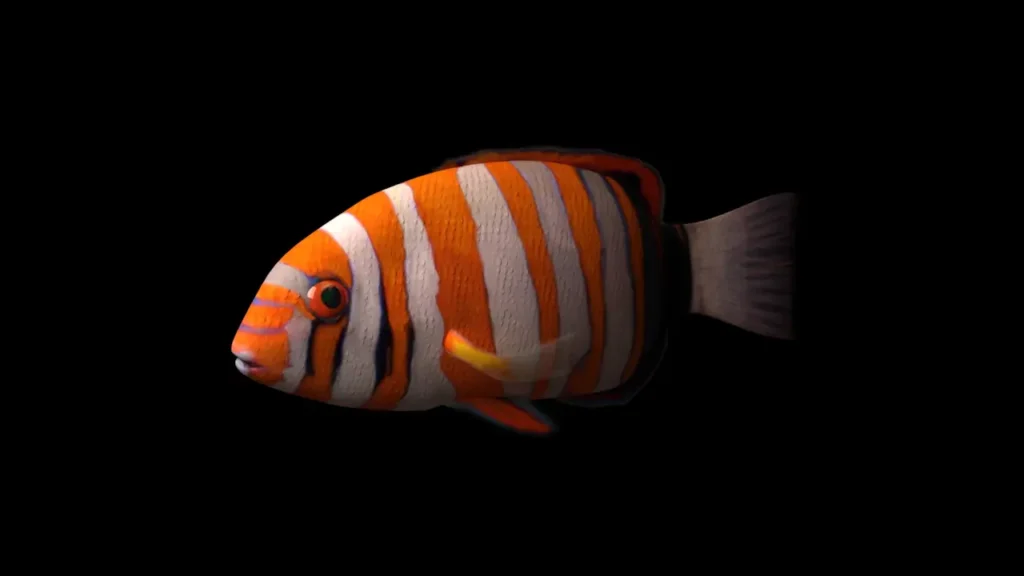
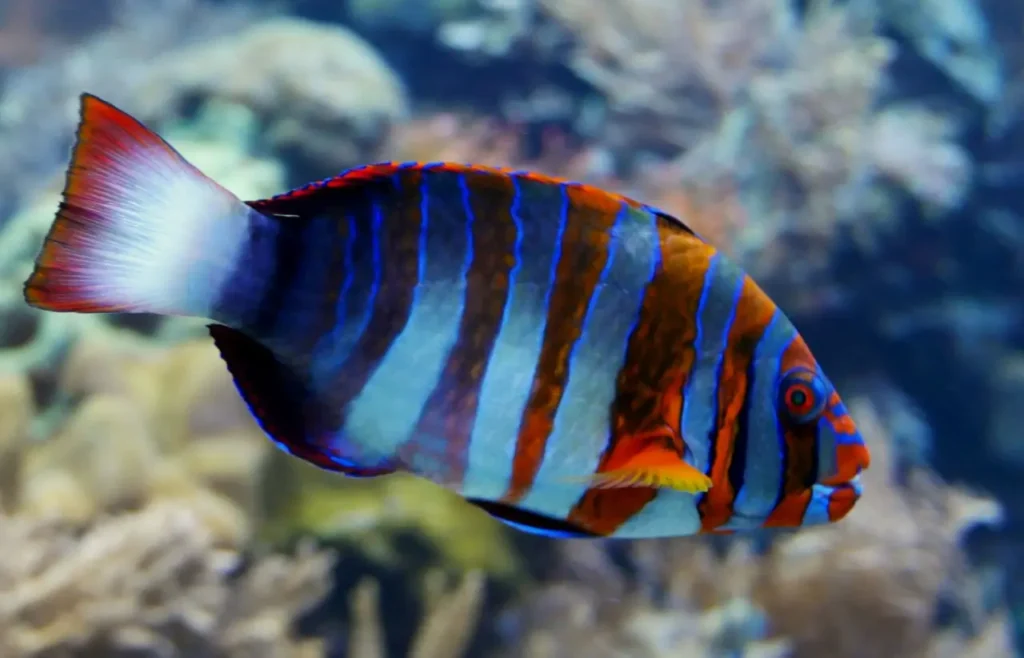

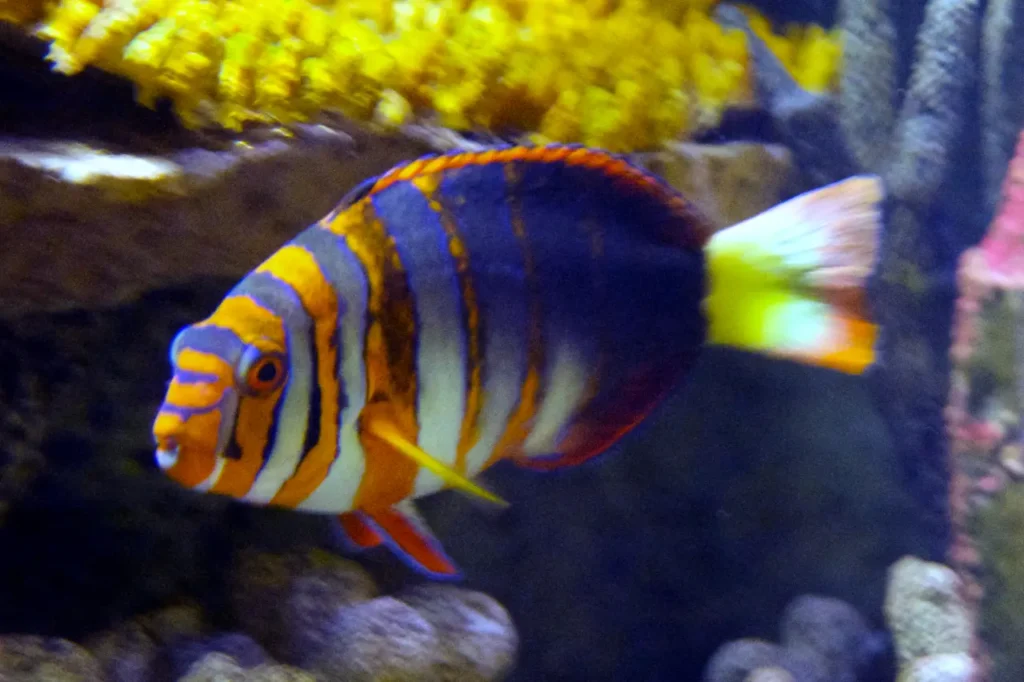
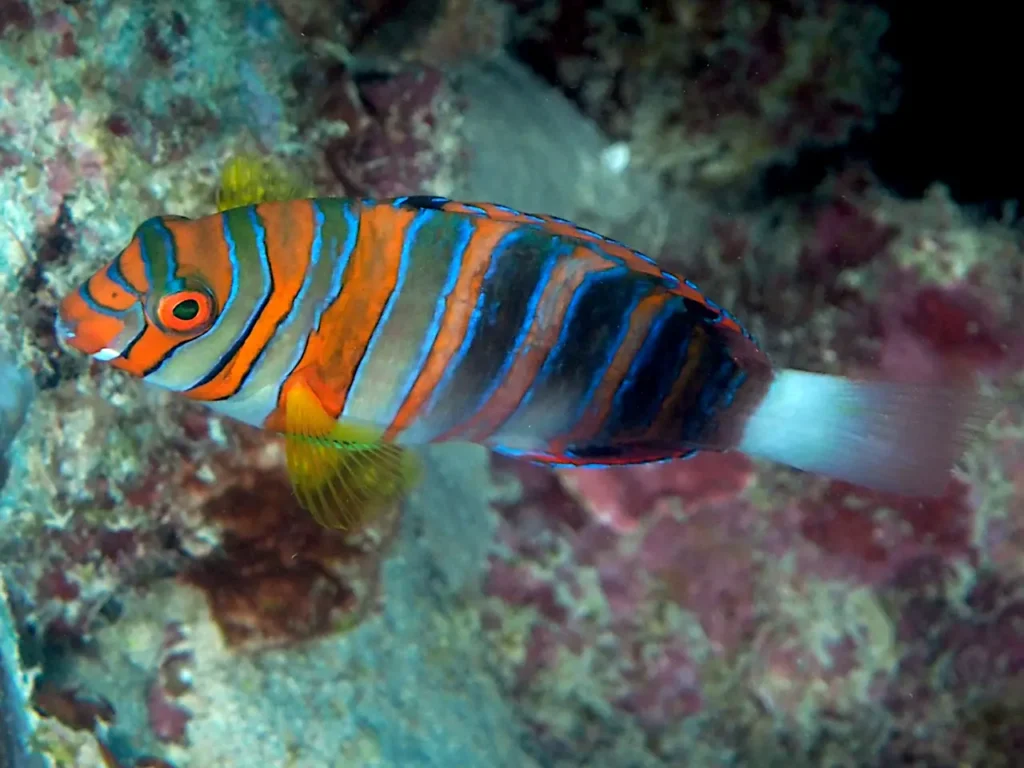
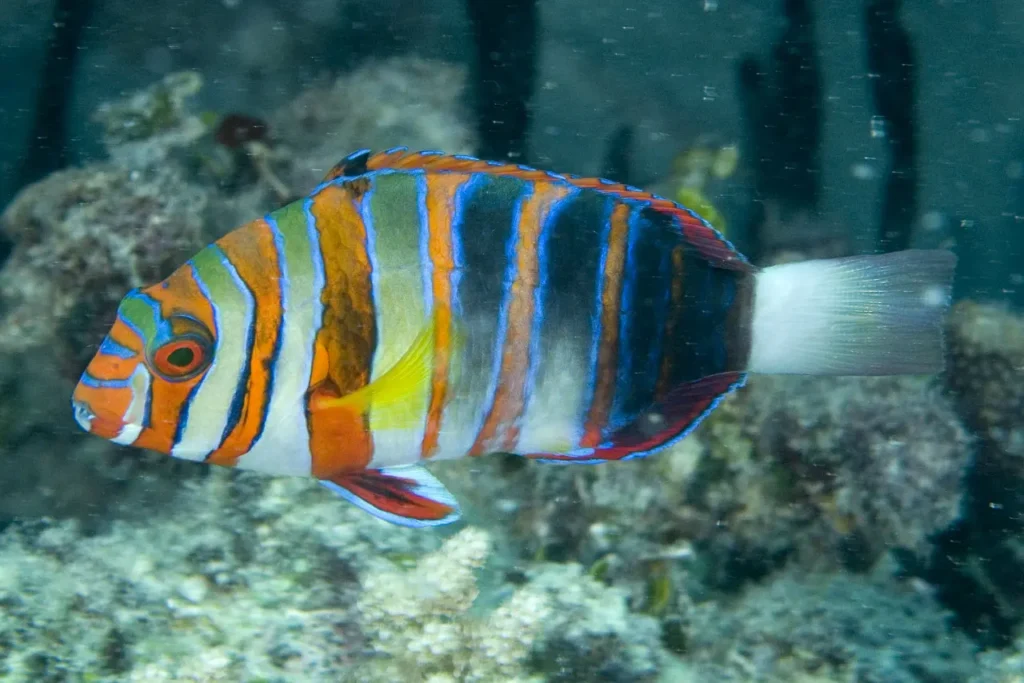
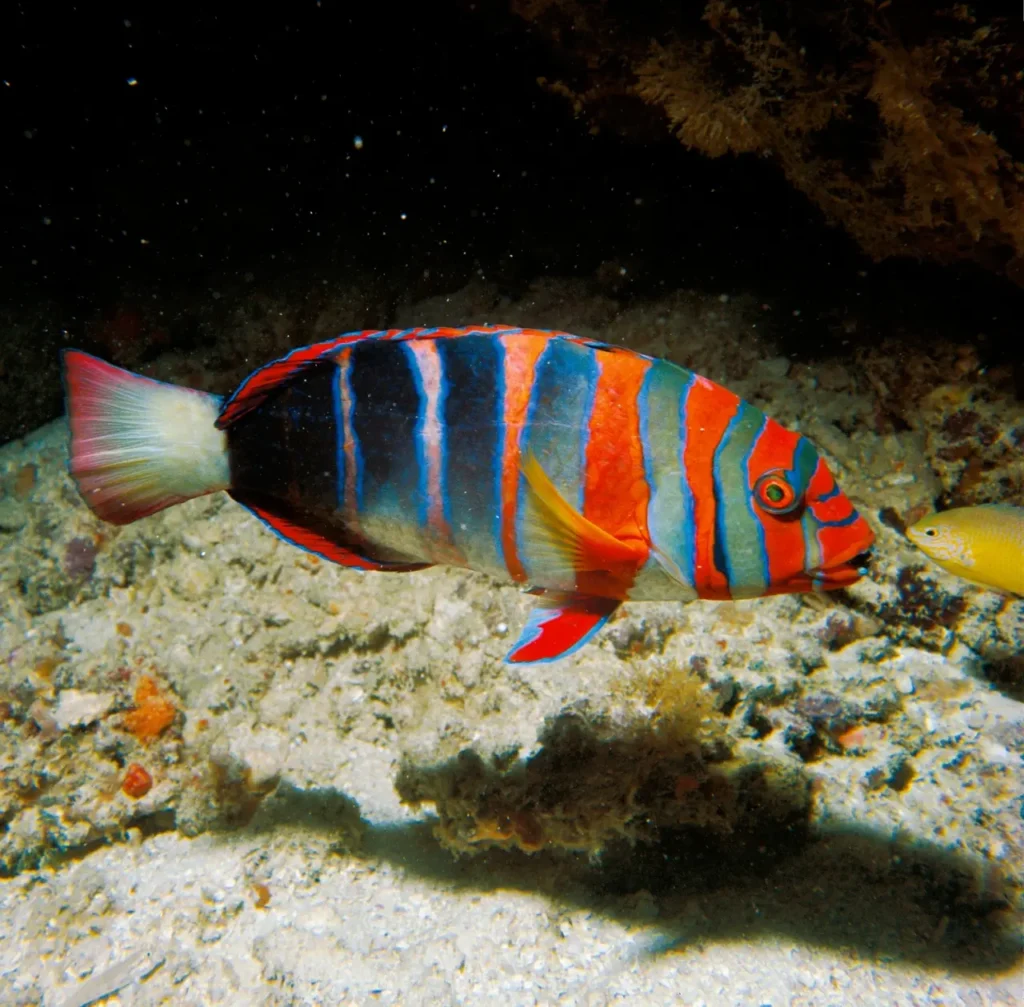
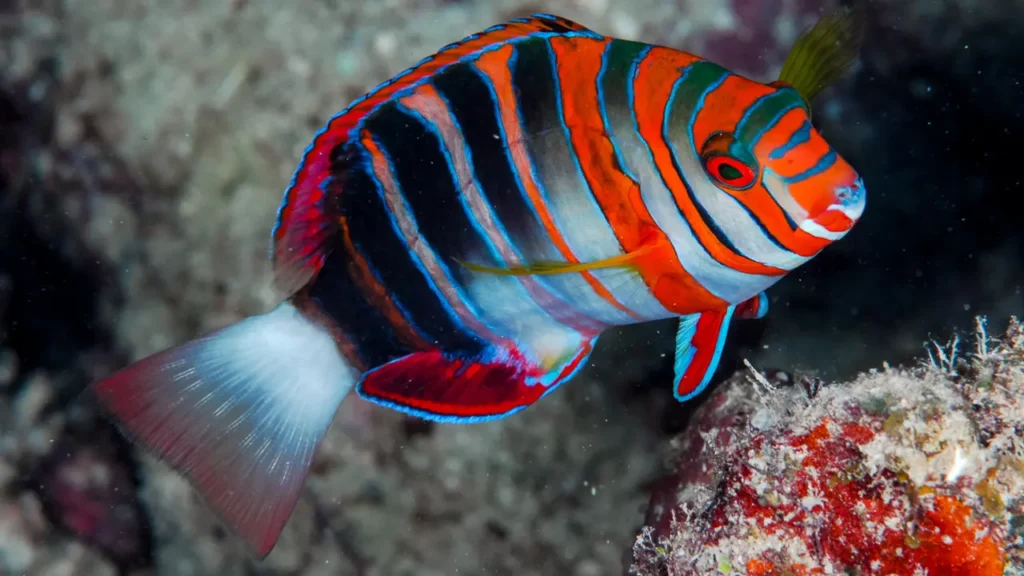
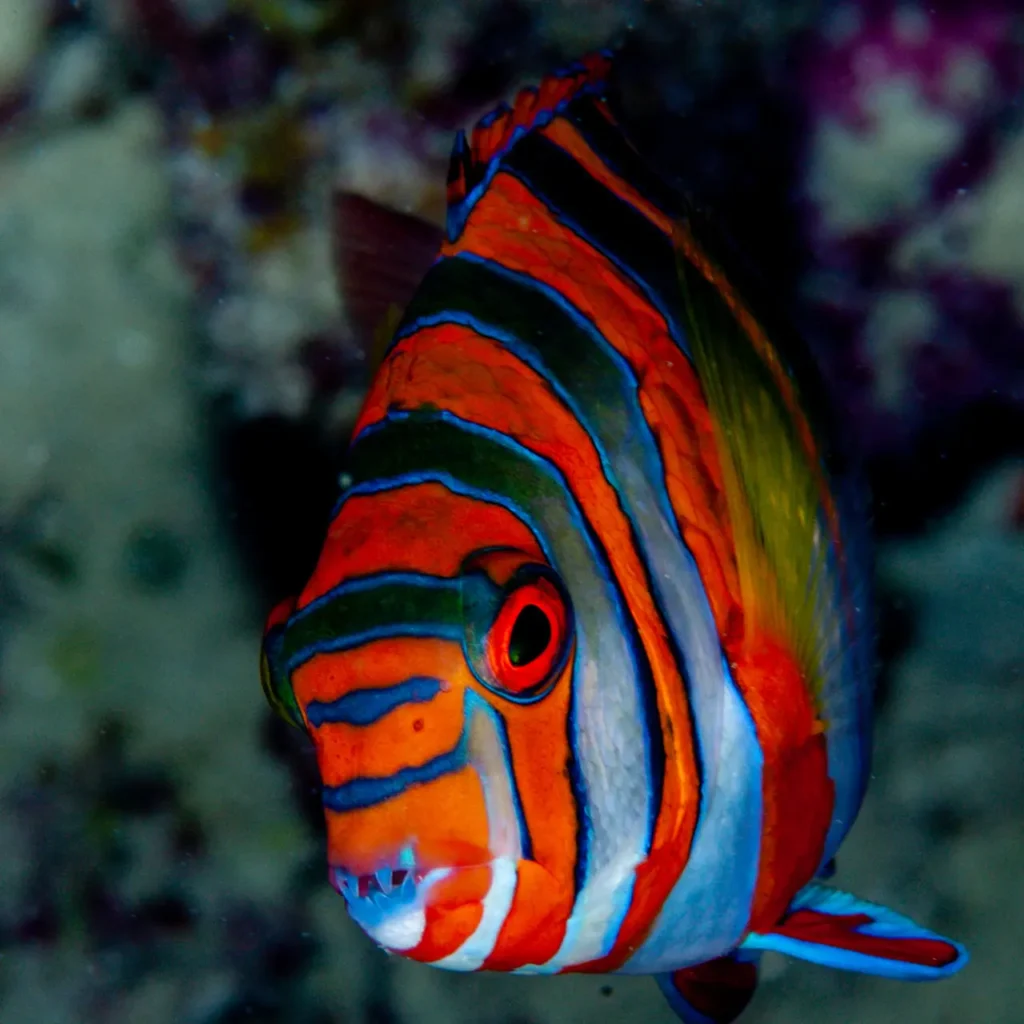
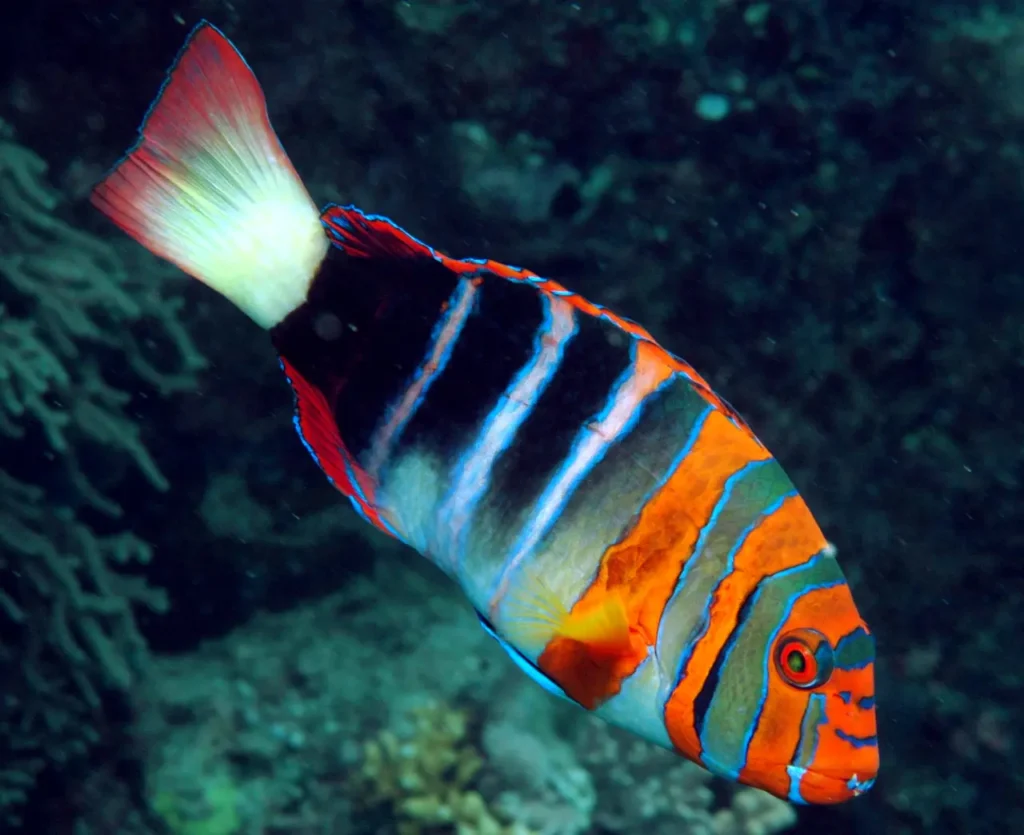
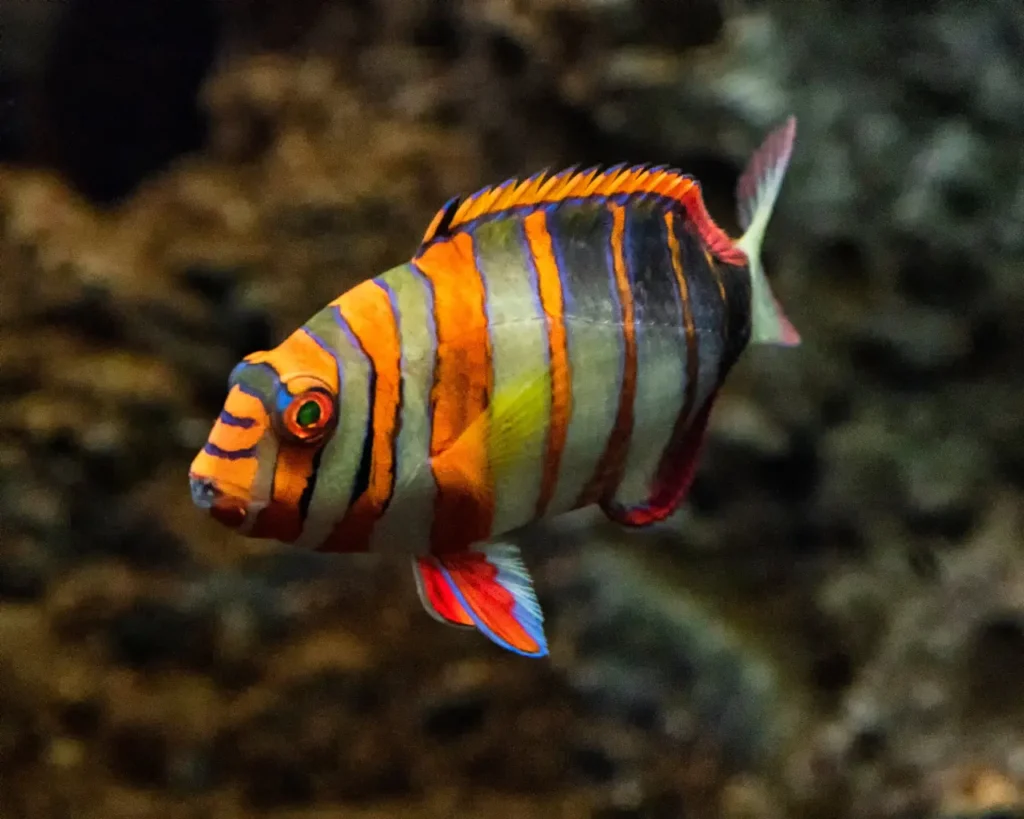


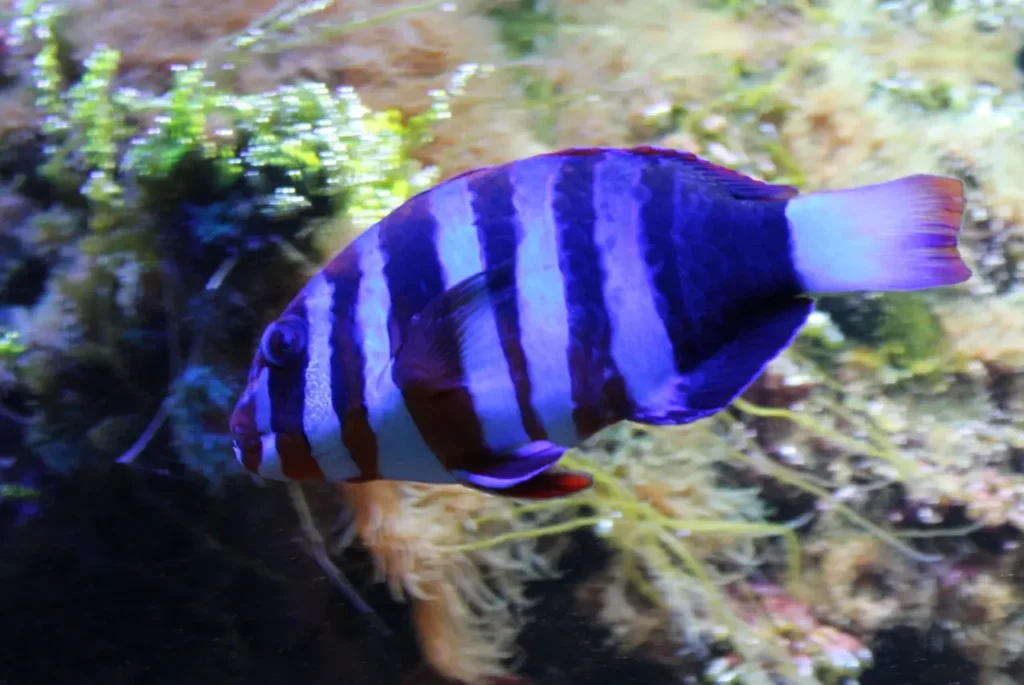
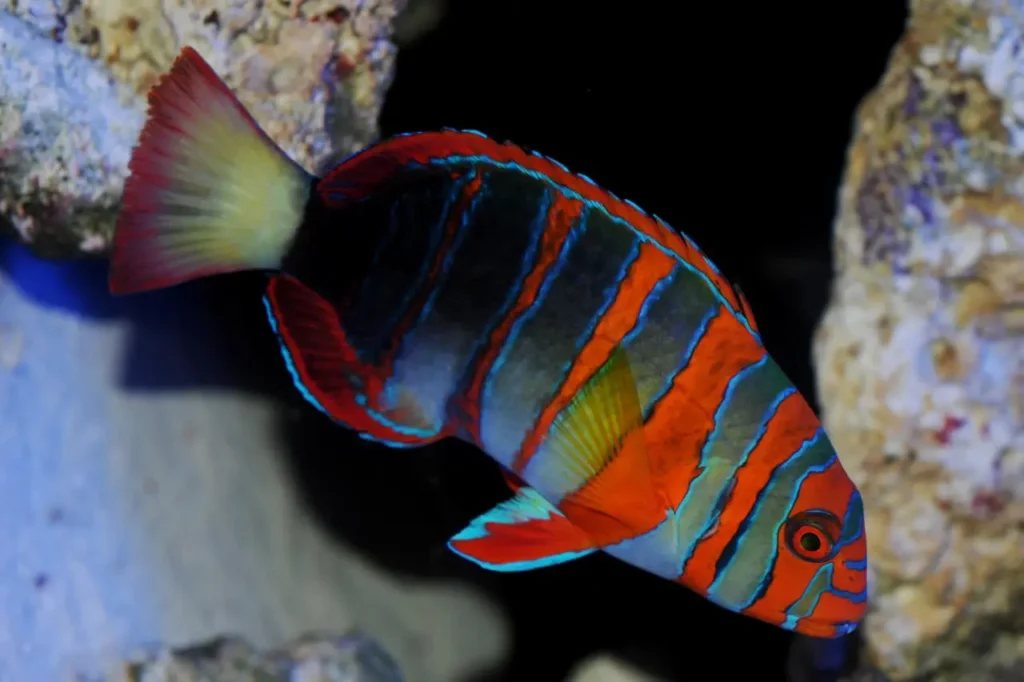


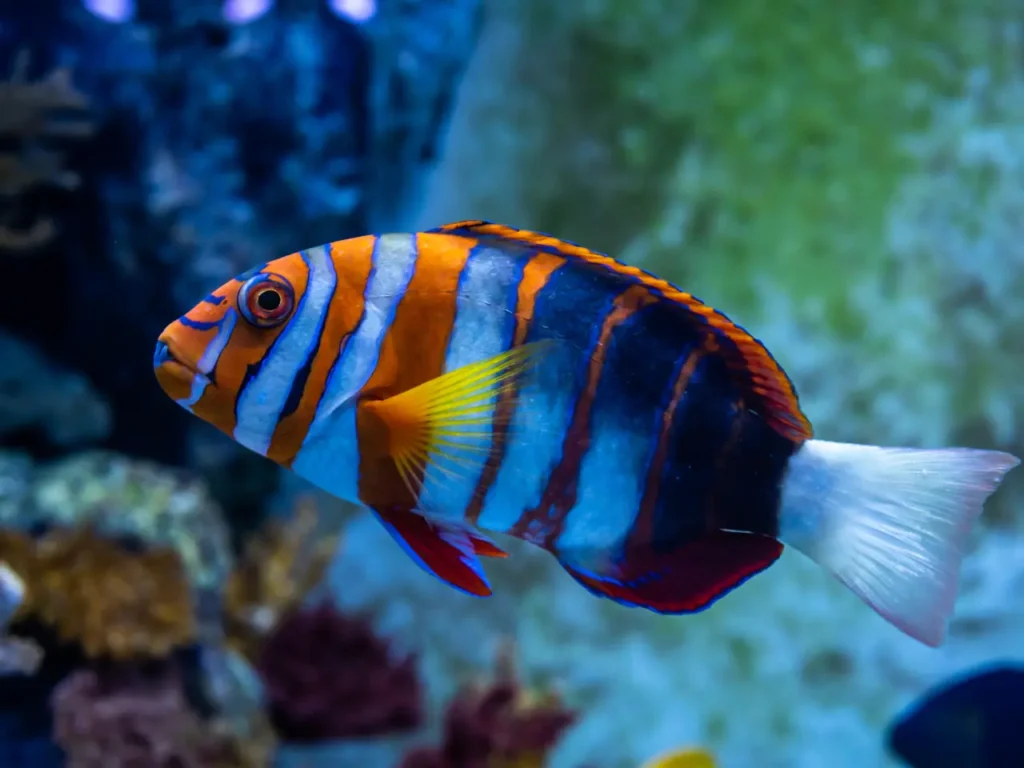
Appearance and Patterns
The Harlequin Tuskfish is known for its eye-catching appearance and unique markings. Its body features a beautiful blend of blue, yellow, and white hues, with bold stripes and intricate patterns that vary from individual to individual. Its most striking feature is the prominent “tusk,” a pair of elongated canine teeth that protrude from the mouth, giving the fish its name. These teeth are used for a variety of purposes, including crushing shells and defending territory.
Habitat and Distribution
The Harlequin Tuskfish is found in the Indo-Pacific region, particularly in the coral reefs of the Indian Ocean and the western Pacific Ocean. It inhabits shallow coastal areas, lagoons, and outer reef slopes, where it seeks shelter among crevices and coral formations. These vibrant and diverse habitats provide the perfect backdrop for the Tuskfish’s intriguing behavior and feeding habits.
Feeding Behavior
The Harlequin Tuskfish is primarily a carnivorous predator, feeding on a variety of small marine invertebrates, crustaceans, and fish. It uses its powerful jaws and specialized teeth to crush the hard shells of prey, including snails, clams, and sea urchins. With its keen eyesight and ability to maneuver through tight spaces, the Tuskfish hunts with precision, often flipping over rocks and coral debris in search of hidden prey.
Behavior and Social Structure
The Harlequin Tuskfish is generally a solitary species, though it can be observed in pairs or small groups during spawning seasons or when establishing territories. Males are known to defend their chosen territories aggressively, displaying territorial behaviors towards other fish. They establish dominance and court potential mates through elaborate displays, often involving head-shaking movements and fin displays.
Reproduction and Life Cycle
During the breeding season, the Harlequin Tuskfish engages in courtship rituals, where males display their vibrant colors and patterns to attract females. Once a pair forms a bond, they engage in a synchronized spawning event, releasing their eggs and sperm into the water column. The fertilized eggs hatch into larvae, which undergo a pelagic (open ocean) phase before eventually settling in the coral reef environment.
Conservation Status and Threats
The Harlequin Tuskfish is currently listed as a species of least concern on the IUCN Red List. However, like many coral reef-dependent species, it faces various threats that require conservation attention. Habitat destruction, overfishing, pollution, and the impacts of climate change, including coral bleaching, pose risks to their populations. Conservation efforts focused on protecting coral reef ecosystems, implementing sustainable fishing practices, and raising awareness about the importance of preserving these unique marine species are crucial for their long-term survival.
A Symbol of Coral Reef Beauty
The Harlequin Tuskfish serves as a stunning representative of the captivating biodiversity found within coral reef ecosystems. Its vibrant colors, intricate patterns, and intriguing behavior make it a true marvel of the underwater world. As we strive to protect and conserve our oceans, let us recognize the importance of preserving the delicate habitats that support the Harlequin Tuskfish and other remarkable marine species, ensuring their survival and the continuation of their mesmerizing presence in our seas.

